Underneath the glitz of its casinos and its elegant, Portuguese heritage, Chinese traditional culture is alive and well in Macau. Think of Macau, and it’s likely that the first thing which comes to mind is its glamorous Cotai Strip and its famous UNESCO World Heritage Historic centre but head to the former Portuguese colony and you’ll find that it has as many layers as an onion.
Tucked away in the picturesque lanes of Taipa Old Village, which is a delightful place with shops, Portuguese restaurants and cafes dishing up tasty Macanese street food and snacks, the Temple of Pak Tai is rooted in ancient Taoist traditions and beliefs.
Its annual Feast of Pak Tai is an elaborate affair, with spectacular Cantonese opera performances, acrobatic lion dances and tables piled full of food.
The Feast of Pak Tai is only one of the many festivals in Macau you might like to plan your trip around. Other useful Macau posts to read are:
- Amazing Places To Visit in Macau
- Where To Stay in Macau
- Macau Itinerary For A One Day Trip
- The Ultimate Macau World Heritage Guide
Contents
Feast of Pak Tai
What is the Feast of Pak Tai?
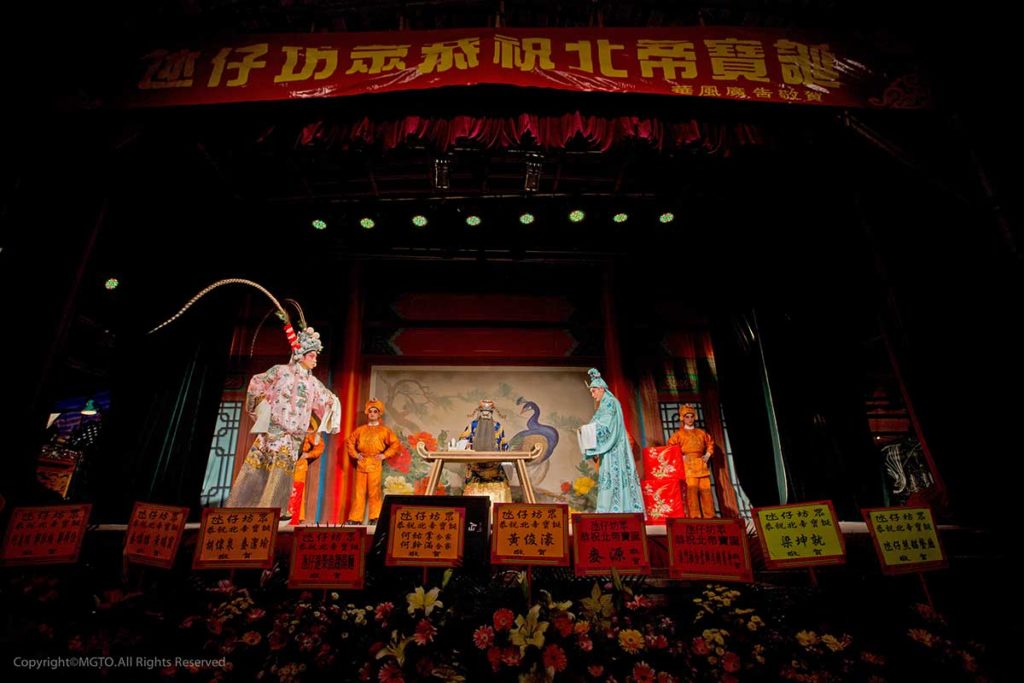
One of Taipa Village’s biggest annual celebrations, the Feast of Pak Tai celebrates the birthday of Taoist water god Pak Tai.
The main event is a public ceremony, followed by a dragon dance and lion dance around the temple, and then around Taipa Old Village.
This is held on the third day of the third lunar month of the year – Pak Tai’s birthday – but the celebrations stretch out for a number of days on either side.
On the morning of the festival, the square in front of Pak Tai Temple buzzes with life. Volunteers stand around trestle tables, chatting and packing oranges into small red bags, ready to be distributed later.
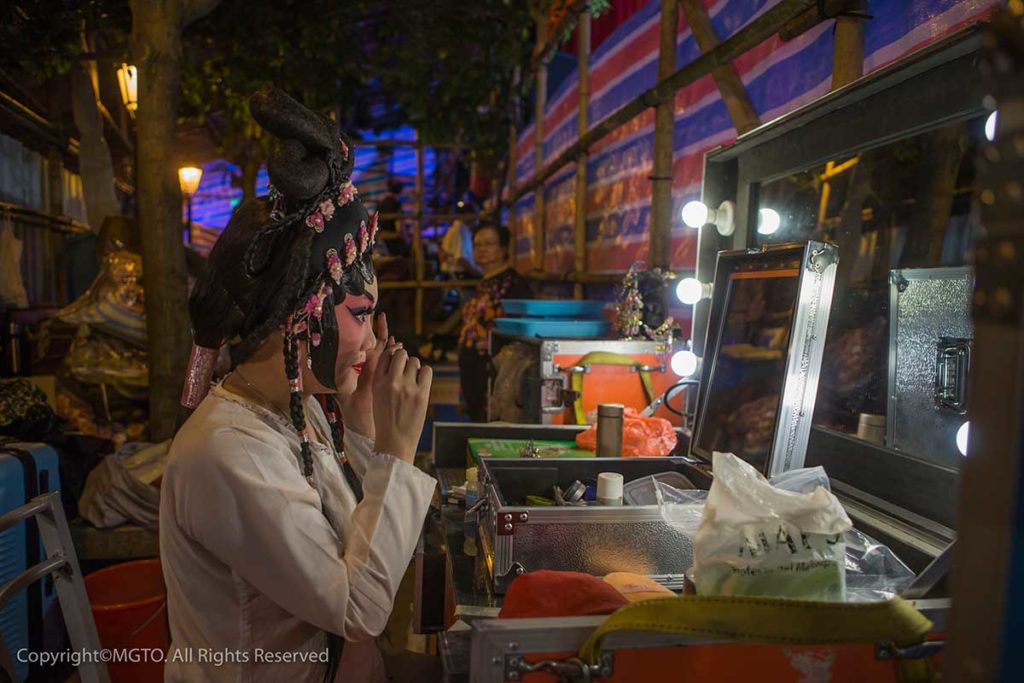
Whole roast suckling pigs have already been delivered, and lie wrapped up in red paper on another row of trestle tables, which groan under their weight.
These foods represent a wish for prosperity; in Chinese traditions, red is an auspicious colour and oranges are a lucky fruit.
Offerings to the god are thought to ensure that your prayers will be successful.
On one side of the square, a handful of stalls begin to set up, displaying handicrafts such as whirligigs and brightly coloured, coiled wire sculptures.
Outside the walls of the temple, a long, shiny dragon body is carefully balanced on wooden poles, ready for the dancers to step into its belly and bring it to life.
Once the dragon dance starts, they will slot into place and move together like a well-oiled machine, perfectly trained.
Now, however, they sit around languidly, resting before the exertion to come.
Waiting for significantly more exertion are the lion dancers, a younger troupe with fewer members.
Lion masks are placed on either side of the temple entrance, in two spaces almost like the wings of a theatre, and teenagers with drums mill around.
Full of synchronised high jumps, shoulder stands, and acrobatics, the lion dance is difficult to execute.
The lion dancers thrum with nervous energy, already dressed from the waist down in a multi-layered, sequinned lion leg costume.
As the clock approaches noon, elderly Taipa residents and visitors trickle in, filling the rows of chairs facing the temple, and standing room on either side.
If you’re dead set on getting a seat, it might be wise to head to the temple early.
Otherwise, there’s no need to worry too much about punctuality – the first part of the ceremony is taken up with speeches in Chinese, and there’s plenty of space for latecomers.
Throughout the ceremony, people trickle in and out.
Once the speeches have finished and local dignitaries have worshipped at the temple entrance, holding sticks of incense and bowing at the waist, a thundering drum beat starts up, and the dragon bursts into the square.
Accompanied by the bang of drums and the clash of cymbals, it pays its respects to Pak Tai and executes a complicated dance, long body twisting and weaving.
The dragon is followed by lion dancers, after which dragon and lions peel away from the temple and dance through the streets of Old Taipa.
History of Taipa
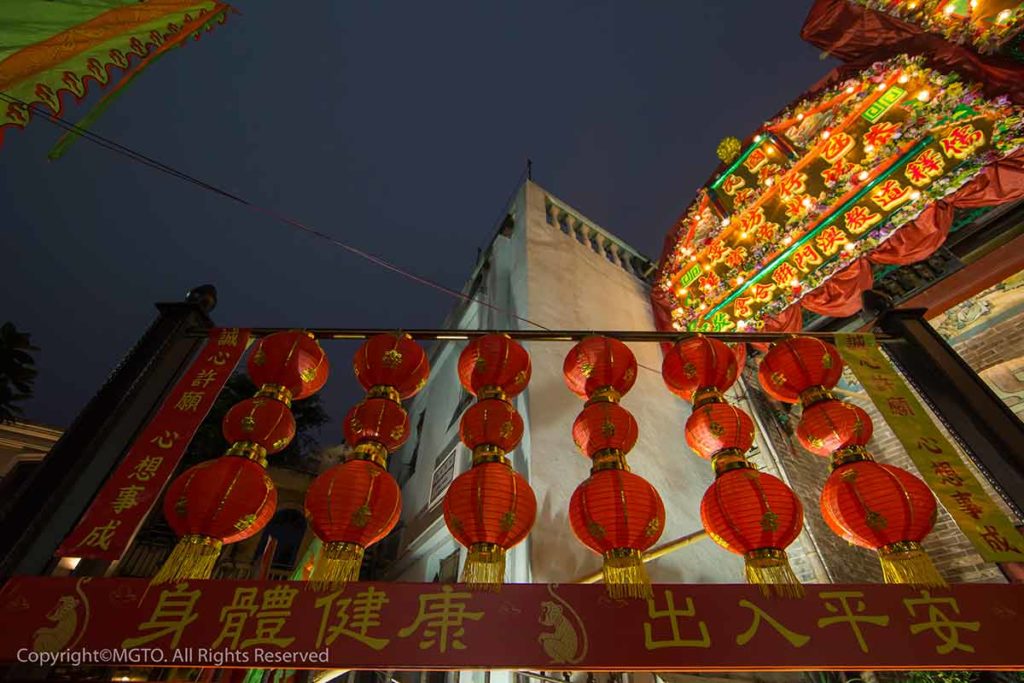
The Feast of Pak Tai is rooted in Taipa’s history.
Traditionally, Taipa was a fishing village, and its inhabitants were closely aligned to the ocean.
According to legend, Pak Tai (also known as “Emperor of the North”, or Emperor Xuan Wu) was the deity who defeated a rampaging demon king.
He was also a powerful water god, with the ability to control the oceans and to resist the raging of both floods and fires.
These qualities endeared him to Taipa’s fishing community, who built a grand temple in his honour and began to celebrate the Feast of Pak Tai.
Pak Tai Temple was built in 1844, but the Taoist belief system dates back much further.
It was China’s official religion during the Tang Dynasty, and it’s thought to stem from the works of Chinese philosopher Lao Tzu, who was active around 500 BCE.
Cantonese opera at the Feast of Pak Tai
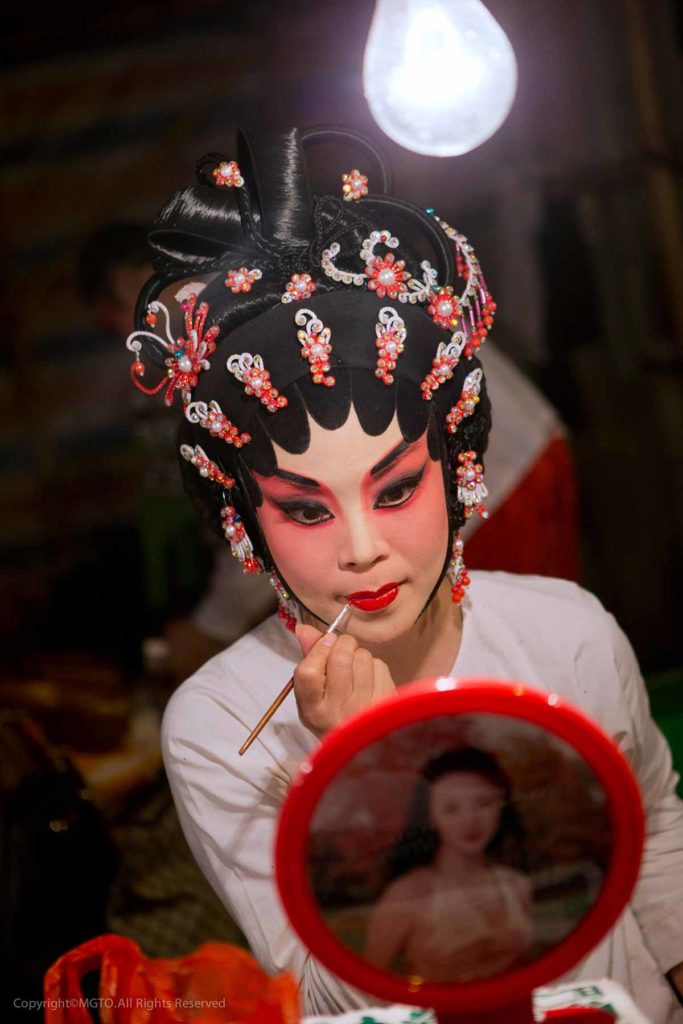
During the festival period, a theatre is set up facing Pak Tai Temple and Cantonese operas are performed nightly.
Just like the main ceremony, these performances are free of charge.
They’re also well worth a visit; expect highly-trained singers, traditional Chinese stories, and spectacular costumes.
How to get to Pak Tai Temple
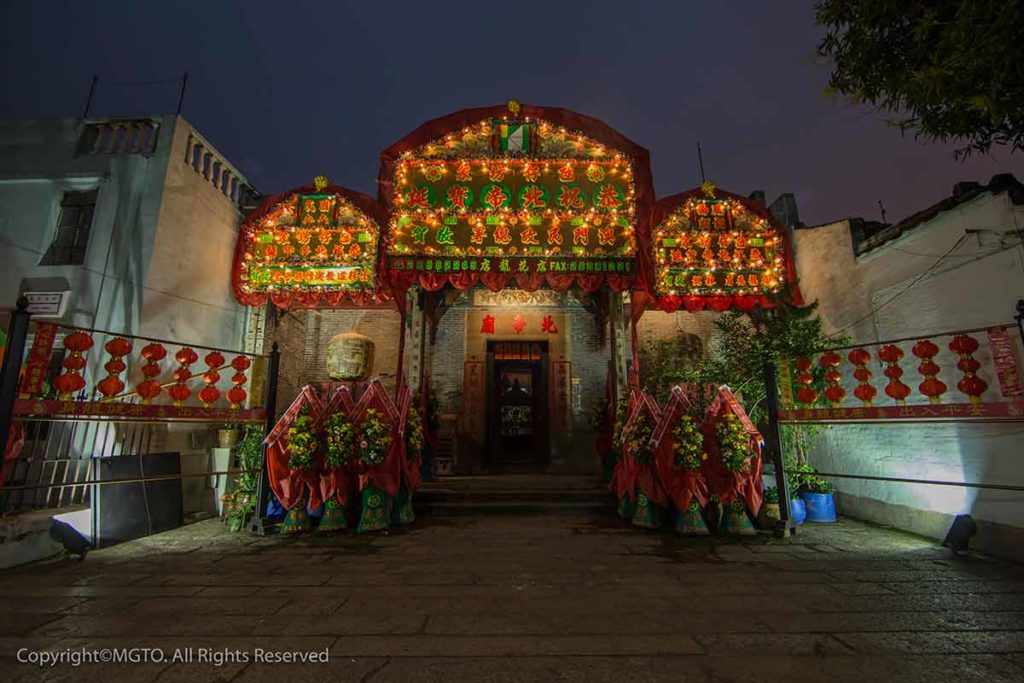
Pak Tai Temple is a 20-minute walk from the Cotai Strip and half an hour’s walk from Macau International Airport.
If you’re coming from downtown Macau, you’ll need to take a bus – there’s no pedestrian access to the bridge between the two islands.
City buses stop at Taipa Old Village main street, or you can take a free casino shuttle bus to Venetian Macau and walk from there.
Look out for the Museum of Taipa and Coloane History, and once you’re there, head down the narrow lane by its side.
Pak Tai Temple is tucked away on the Rua do Meio. You’ll see a tiled direction sign on the corner of the museum if you look closely.
Essential info about the Pak Tai festival
Entry to the festival is free.
As the festival is tied to the lunar calendar, it’s celebrated on a different day each year. Check dates and times at the Macao Government Tourism Office website.
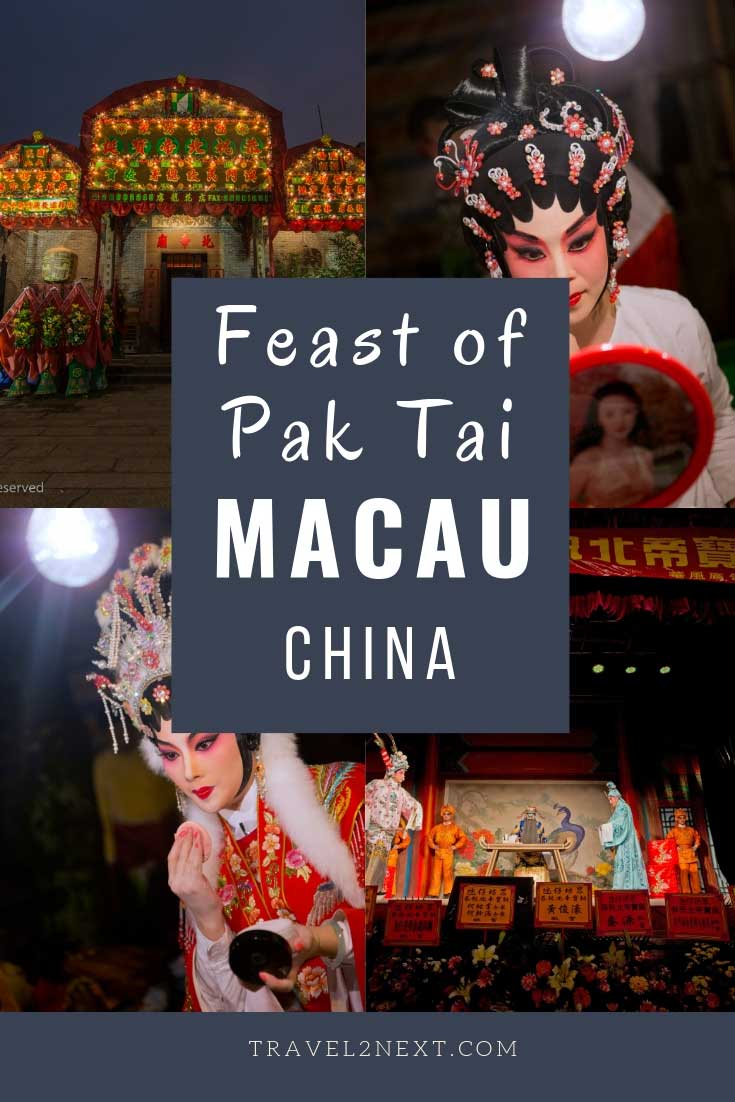
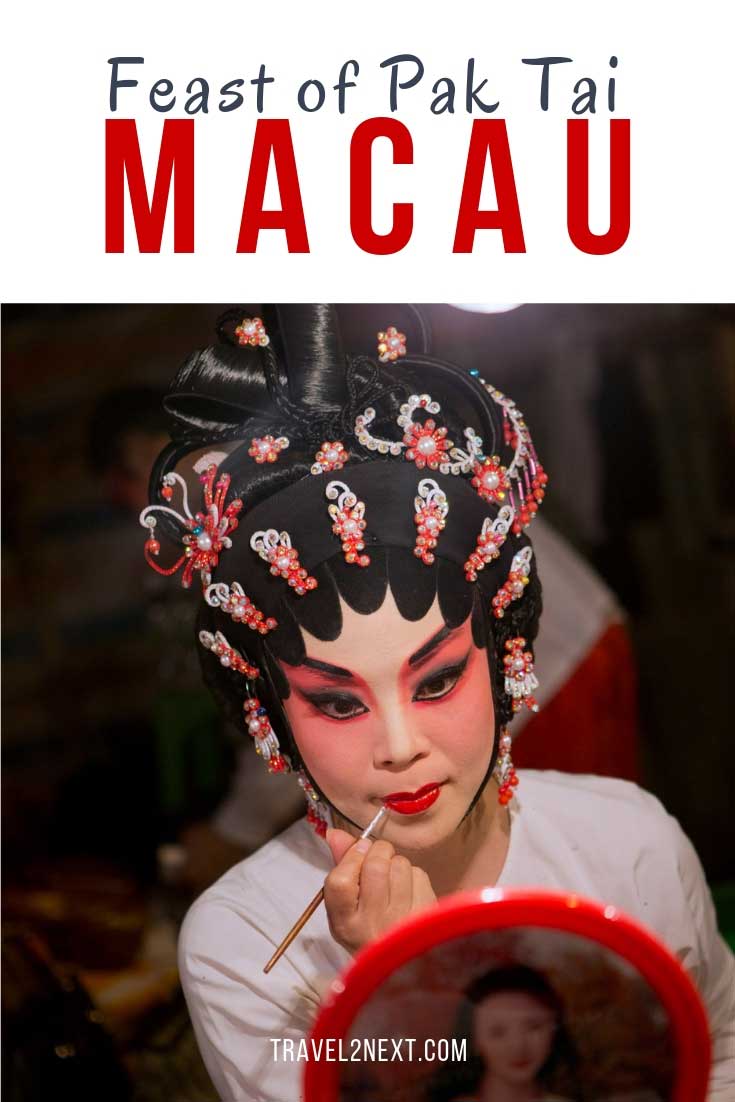
Plan Your Trip

Rent A Car – Find the best car rental rates at Discover Cars. They compare car hire companies to provide you with the best deal right now.

Find A Hotel – If you’re curious about this article and are looking for somewhere to stay, take a look at these amazing hotels.





